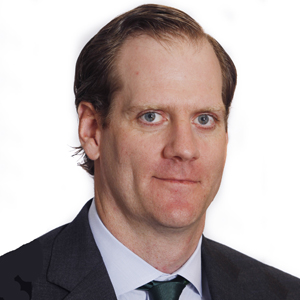Financing was already in short supply when Silicon Valley Bank began to wobble in early March. Now, tremors in the banking sector, resulting most recently in UBS acquiring Credit Suisse, have tightened financial conditions even further, tipping us into a full-on Hunt for Capital like nothing we’ve seen in 15 years. Those with ready capital, particularly capital that can be flexible in one way or another, are able to lend on some of the best terms we’ve seen in a very long time.
The hunt didn’t start overnight in March 2023. The sharp rise in interest rates over the past year caused liquidity in most capital markets to freeze, CLO formation to slow dramatically, the IPO market to pause, and banks to pull back from lending. In other words, many companies ― even high-quality companies ― that needed growth capital found traditional paths to financing closed (Exhibit 1).
EXHIBIT 1
Capital Markets Liquidity as a Percent of GDP Is Down to GFC-Era Levels
Layering a crisis on top of the pressure banks were already feeling from the sharp change in the value of their risk-weighted assets is unlikely to encourage them to lend more. A further pullback in bank lending, especially one caused by technical factors rather than fundamental weakness, has clear implications for the credit markets, including the likelihood that agile investors should have pockets of dispersion to trade on going forward. It also makes Private Credit in several different flavors more attractive.
High-Quality Companies Will Pay More for Execution Certainty
We think the uncertain market backdrop and economic environment will have two effects on private equity sponsors. First, they will favor acquiring very high-quality companies that seem likely to perform well immediately. Second, they are likely to be willing to pay a premium in credit markets for certainty in financing their deals compared to a more uncertain path in public markets.
At a time of great market volatility, borrowers can perceive an elevated degree of risk from traditional underwriting, which typically does not guarantee the full or successful marketing of a new issue. In a private lending arrangement, borrowers typically deal with one counterparty and forego the market risk associated with syndication. However, private loans tend to cost more. Would-be buyers can trade this cost for certainty of execution for a transaction they like.
As rates have risen over the past year, though, we have seen that borrowers are willing to pay 650-675 basis points above floating rates for senior secured debt, compared to 550-575 basis points 15 months ago (Exhibit 2, note that terms are indicative). More importantly, borrowers likely will be willing to pay up to fund large transactions that would have been unheard-of in private markets. There are multi-billion dollar direct lending deals in the market at present that traditionally would have only gone to the syndicated loan market. We expect more deals, including bigger deals, to shift to private markets so long as uncertainty remains elevated and the Hunt for Capital continues.
EXHIBIT 2
Improved Direct Lending Terms on Senior Secured Debt for a Sample Borrower
Importantly for investors, lenders can demand higher yields and more protective covenants in exchange for supplying scarce capital. We feel lender-friendly constructs such as call protection can be particularly attractive in subordinated debt. Investors can benefit from the higher yields on offer in the junior part of the capital structure, while also locking in their rates in the event that rates begin to fall.
Flexibility Is Key
Borrowers who are caught out without traditional access to capital often need flexibility, which may take several different forms.
Bespoke Capital Solutions in Private Markets
In private markets, what some borrowers need is problem-solving: bespoke capital solutions for unique situations. Privately funded companies that want to expand, invest, or make acquisitions have little interest in raising more equity in a market environment that would likely force them to accept a lower valuation.
Hybrid capital, with characteristics of both debt and equity, can serve borrowers well and make for an attractive risk-adjusted return, too. For example, on the risk side structured equity can have significant downside protection (e.g. it can be structured at a very low loan-to-value). Liquidation preference, dividend protection, and other controls on cash flow can help keep risk to a minimum. On the return side, lenders can benefit from high levels of contractual return and equity upside to deliver high-teens returns.
Pockets of Dispersion in Liquid Market Reward Nimble Managers
The return of inflation and rising interest rates has precipitated a regime change characterized by higher volatility, according to our colleague and CIO of KKR’s Balance Sheet and Head of Global Macro and Asset Allocation (GMAA) Henry McVey. Volatility, of course, can be an opportunity. When U.K. pension funds were forced to sell liquid assets during the LDI crisis, CLO spreads gapped out. However, our Multi-Asset Credit team felt that the market’s movement were largely a reaction to a technical problem, rather than a dangerous change in fundamentals and moved quickly to buy CLOs.
These kinds of opportunities can and have happened all over the public markets, where issuance declined precipitously in 2022 and the supply of securities remains lower than the demand for them (Exhibit 3). High yield debt, where retail investors make up some 40% 1 of the market and are more likely to sell in a downturn, is particularly vulnerable to sudden moves on negative news. Leveraged loans, too, can see spreads rise quickly. In this kind of environment, we think multi-asset mandates that can pivot among asset classes when opportunities arise are a critical part of a credit strategy. The key, we think, is to focus on acting as a liquidity provider when and where the need arises and to focus on risk that is not overly complex. Reaching too far for risk in general or for risk that is overly reliant on open capital markets can be challenging in the current market environment. We are pleased, for example, to have zero exposure to AT1 bonds anywhere in our platform.
EXHIBIT 3
The Market Remains Undersupplied
Historic High Yield Supply and Demand
Historic Bank Loan Supply and Demand
At the moment, we see a growing number of opportunities to help companies facing loan maturities “amend and extend” their debt. Lenders have the opportunity to work with high-quality companies that have a high likelihood of refinancing to push out their maturities in exchange for wider spreads. In addition to the wider spreads, lenders can benefit from an upfront fee for allowing this extension. We believe being a liquidity provider can deliver excess returns in an environment like this.
Conclusions
It’s good to be a lender during a hunt for capital. Creditworthy borrowers face a real risk of being swept up in a wave of negative sentiment. We are committed to being in the market, helping to finance market-leading companies with strong cash flows that we think can defend their margins even in an inflationary environment. The long reign of the Hunt for Yield had investors accustomed to the idea that going out on the risk curve was the only way to get decent returns. It’s time for a new way of thinking: Returns are readily available, but quality and risk management have never been more important.
- The 40% figure includes the entire potential universe of retail high yield allocators, including both dedicated high yield mutual funds and investment grade mutual funds, which can sometimes invest a portion of their holdings in high yield debt.
DISCLAIMER


Share on